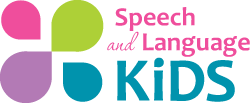When your child reads out loud, does it sound choppy or broken up?
Does your child have trouble understanding and remembering things he has read out loud?
Your child may benefit from some tips on improving reading fluency.
What Is Reading Fluency?
According to the National Reading Panel, reading fluency is defined as follows:
“Fluency is the ability to read a text accurately and quickly. When fluent readers read silently, they recognize words automatically. They group words quickly to help them gain meaning from what they read. Fluent readers read aloud effortlessly and with expression. Their reading sounds natural, as if they are speaking. Readers who have not yet developed fluency read slowly, word by word. Their oral reading is choppy and plodding.”
How Can I Help Improve My Child’s Reading Fluency?
The following tips are summarized from the National Reading Panel’s Report on reading fluency:
1. Model Fluent Reading: You can help improve your child’s reading fluency by showing them what it sounds like when you read fluently. Choose something to read that is fairly easy for your child (not too many words that they wouldn’t know) and read it out loud to your child. Read effortlessly and with expression. This will help your child hear what it sounds like to read fluently and will also show your child how reading fluently can provide meaning to the text. Point to each word as you read. However, make sure that you’re not putting in extra pauses because your finger needs extra time to catch up. Point to the words like this will help your child understand where natural pauses occur and which words should be emphasized.
2. Talk About Punctuation: Another way to improve your child’s reading fluency is to talk about how the punctuation changes the way you read sentences. Explain to your child that when you see a question mark, your voice should raise in pitch at the end of the sentence to indicate a question. Show your child some examples of this. Explain how your voice lowers in pitch and there is a pause when you see a period. Commas and colons indicate short pauses and exclamation marks tell you to get loud and sometimes more high pitch. You can point these out and demonstrate them before, during, and after you read something out loud to your child.
3. Have Your Child Read The Text Back To You: After you have read the text out loud to your child, have him read it back to you. Provide your child praise and help as they go along. Have your child continue to read the text repeatedly until he is quite fluent with it. This usually takes three or four readings. If it takes longer than that, your text is too hard and you should find something easier.
4. Read The Text With Your Child: Reading a text at the same time as your child (in unison) is another great way to practice reading fluency. You can start by reading the text to your child the first time. The next time you read it, encourage your child to join in and read with you whenever she feels comfortable. After three-five times reading this text, your child should be able to read the entire thing with you. If not, the text is too hard and you should try something easier.
5. Have Your Child Read Along with a Book On Tape: Buy some books on tape (or CD) or record yourself reading a book out loud for your child. The first time, have your child listen to the tape and point to the words as he hears them being read. The next time, encourage your child to read along. For this activity, it is best if there are no sound effects or music in the background.
I hope these tips help you and your child work on reading fluency at home. For more great speech and language activities, don’t forget to sign up for our email newsletter and receive a free E-Book on improving your child’s speech at home.
More Resources for Speech-Language Pathologists:
Looking for more therapy ideas and resources to help you provide the BEST services to your clients? Join us in The SLP Solution, our membership program for speech-language professionals! Inside the membership, you’ll find:
- Step-By-Step Guides for teaching a variety of speech/language/communication skills
- Pre-Made Worksheets and Therapy Activities for hundreds of different topics
- Training Videos for dealing with difficult disorders or problems
- Answers to Your Questions in our exclusive SLP community
- Tools and Resources to help you with your paperwork and admin tasks
- Continuing Education through our monthly webinars and webinar recordings
To join us in the full SLP Solution, or to snag a free membership, click on the button below!



This gave me a lot idea to help my child thanks you so much
Wonderful! Glad you enjoyed it!!
If you are going for finest contents like I do, only pay a visit this web page daily since
it presents feature contents, thanks